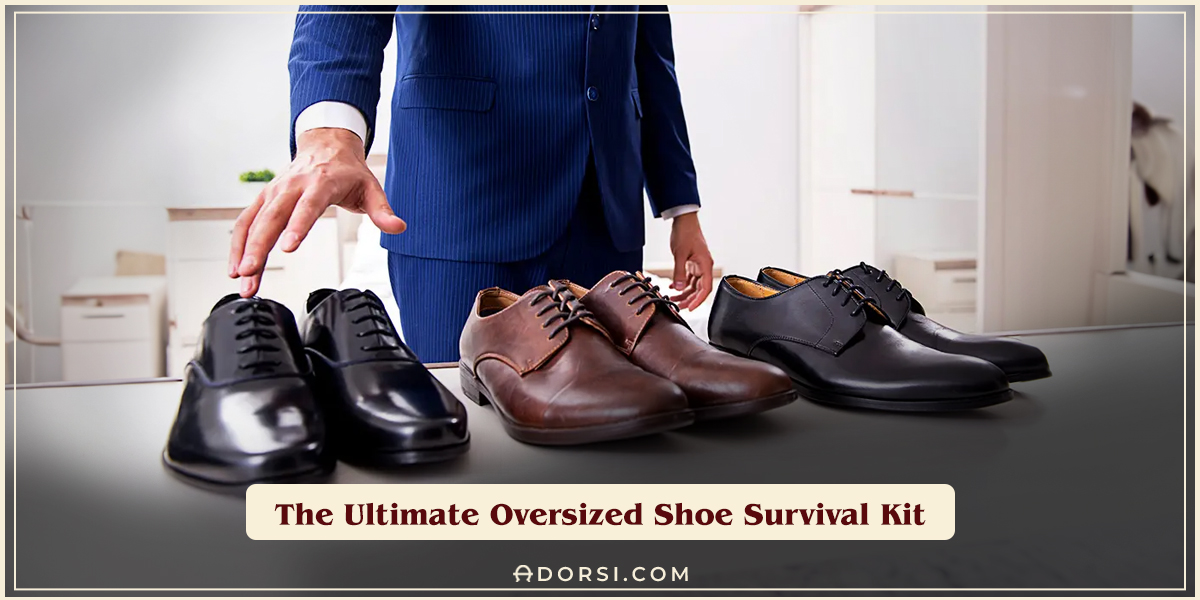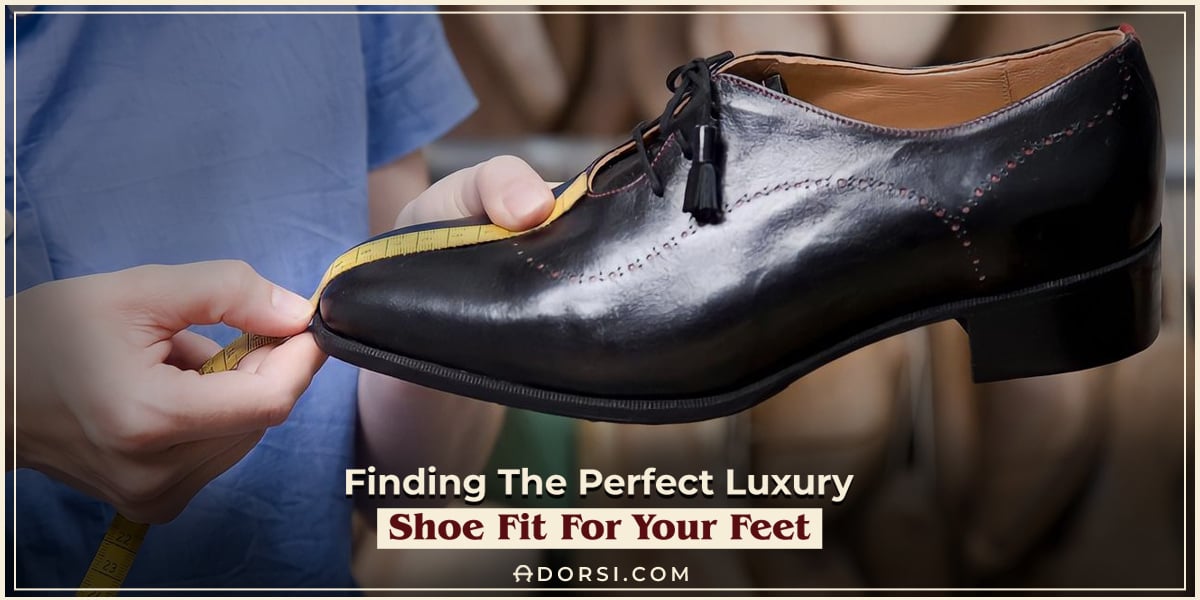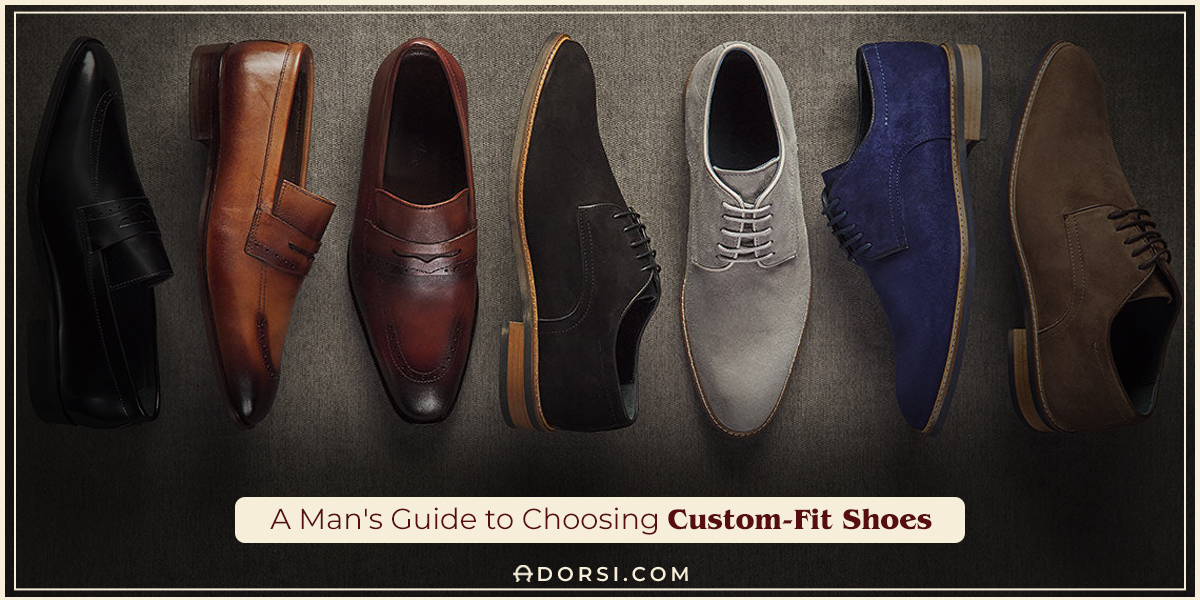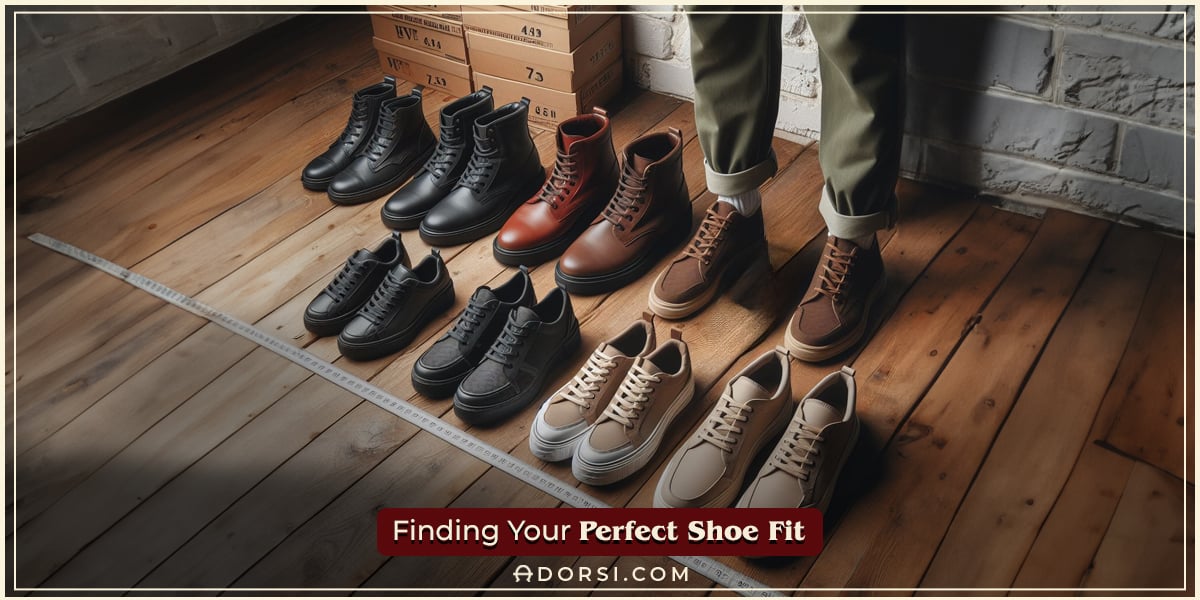If you've recently found yourself stuck with a pair of shoes that are way too big, you're probably scratching your head, wondering how you ended up in this situation and how to avoid it in the future.
Whether you're dealing with sneakers, dress shoes, or any other type of footwear, oversized shoes can be a real challenge. The discomfort, blisters, and constant slipping that comes with wearing shoes that are too big can turn a simple night out into a major hassle.
That’s why we’ll explore practical solutions and offer helpful advice to those facing the struggle of ill-fitted shoes.
Reasons for having bigger shoes
There are several reasons why you may find yourself with shoes that are too big, understanding them is the first step to help you overcome the challenges associated with oversized shoes.
Changing Foot Size: Weight, Pregnancy, and Medical Factors
Weight gain or loss can totally mess with the whole structure and size of our feet, making us have to switch up our shoe sizes. Similarly, pregnancy can cause temporary changes in foot size and shape due to wild hormonal transformations you go through. Additionally, if you're dealing with medical stuff like edema or foot conditions like bunions or hammertoes, you might find yourself needing bigger shoes to accommodate those changes and keep your feet cozy.
Purchasing shoes in the wrong size or style
We've all been there – excitedly purchasing a new pair of shoes, only to realize they're too big. Inaccurate measurements or improper fitting techniques can lead to choosing shoes that are larger than necessary. For example, certain shoe styles, such as slip-ons or open-toe designs, may require a smaller size to ensure a secure fit. Failing to consider these factors when making a purchase can leave you with shoes that are way too spacious.
Inheriting or receiving shoes as gifts that are too big:
Another common scenario is inheriting or receiving shoes as gifts that are larger than your actual size. While the intention is undoubtedly thoughtful, the fit may not be ideal. Whether it's inherited shoes from family members or receiving a gift from a well-meaning friend, it's not uncommon to end up with shoes that don't quite match your foot size.
Risks of wearing shoes that are too big
Wearing shoes that are too big can have negative consequences on your foot health and overall comfort. One of the most immediate and noticeable effects of wearing shoes that are too big is foot pain and discomfort.
When your feet don't have proper support and are constantly shifting within the shoe, it can lead to soreness, arch pain, and fatigue. The lack of a snug fit can also cause your toes to scrunch up or slide forward, leading to additional discomfort and strain on your foot muscles.
Just like tight shoes, friction is also a possibility when your shoes are too big. This friction often results in painful blisters that require time to heal. Moreover, oversized shoes can raise the chances of other foot injuries like sprains or twisted ankles due to insufficient stability and support. It's important to find the right fit to avoid these issues!
The impact of oversized shoes goes beyond just your fee. The lack of proper fit and support can disrupt your whole body's alignment, leading to poor posture and balance. When your shoes are excessively large, it becomes challenging to maintain a stable and balanced stance, increasing the risk of tripping or falling. Over time, which can contribute to long-term postural issues.
What to do with big shoes?
If you find yourself with shoes that are too big, there are many practical steps you can take to make them more comfortable to wear.
- Insoles and padding to fill the extra space
One of the easiest and most effective solutions is to use insoles or padding to fill the additional space inside the shoes. They come in various sizes and materials, such as foam or gel, and can provide extra cushioning and support while reducing the excess room. Simply place the insoles or padding at the bottom of the shoes to fill the gaps and create a snugger fit.
- Adjustable shoe inserts and laces
Consider using adjustable shoe inserts or laces to customize the fit of your oversized shoes. These inserts, often made of elastic or silicone materials, can be placed strategically in the shoe to tighten specific areas and improve overall fit. Similarly, replacing regular laces with elastic or adjustable ones allows you to achieve a more secure and tailored fit.
- Wear thicker socks
Another simple solution is to wear thicker socks when wearing shoes that are too big. Thick socks can add extra padding and fill the empty space, helping to minimize slippage and improve overall comfort. Opt for socks made of moisture-wicking materials to maintain a dry and fresh environment for your feet.
- Taking shoes to a professional cobbler for alterations.
For more specialized or expensive footwear like suede shoes, it might be worth considering taking your shoes to a professional cobbler. Cobblers have the expertise to make alterations to shoes, such as adding extra padding or making adjustments to the shoe structure to achieve a better fit.
- Donating or selling shoes that cannot be worn comfortably
In some cases, despite your best efforts, the shoes may still be too big to achieve a comfortable fit. In such instances, consider donating or selling the shoes to someone who can wear them comfortably.
How to avoid shoe sizing issues in the future?
To avoid the frustration of ill-fitted shoes in the future, there are several proactive measures you can take. By following these tips, you can ensure a better fit and increase your chances of finding shoes that are comfortable and suitable for your feet:
- Proper foot measurement and fitting when purchasing shoes
One of the most important steps in preventing future issues is finding the accurate shoe size to have your feet properly measured. Visit a reputable shoe store where shoe experts can measure the length and width of your feet accurately. This will help you determine your correct shoe size and ensure a better fit when selecting new footwear. Especially when considering wide shoe options.
- Order custom shoes that fit you perfectly
If you have difficulty finding shoes that fit well off the rack, consider ordering custom-made shoes especially if you have wide feet. Custom shoe companies utilize precise measurements and tailor the shoes to your specific foot shape and size. While custom shoes may be a bit more expensive, they offer the advantage of a perfect fit, providing you with the perfect pair eliminating the hassle of searching for the right size.
- Regularly foot size check over time
It's worth keeping in mind that your normal shoe size can vary over time. Factors like weight fluctuations, pregnancy, or specific medical conditions can influence the size and shape of your feet. That's why it's a wise habit to regularly assess the fit of your shoes, particularly if you've observed any changes in foot size or comfort. Don't assume that your shoe size will forever remain constant, and be open to adapting your size as needed. Stay flexible and prioritize your foot's changing needs!
- Know your foot type
Understanding your foot's type, and any specific characteristics like wide feet or high arches is crucial to find the suitable types of shoes, particularly when it comes to closed-toe shoes. Closed-toe shoes, such as dress shoes, boots, or athletic shoes, often have a more structured design that can affect the fit and comfort.
Finding the right fit when it comes to shoes is not just a matter of aesthetics but a crucial aspect of foot health and comfort. To ensure your foot health and overall well-being, it's essential to take action if you're experiencing discomfort from wearing shoes that are too big. Whether it's utilizing full-size insoles, padding, or adjustable inserts, or seeking the shoe experts of a professional cobbler, there are solutions available to improve the fit and comfort of oversized shoes.
Remember, your feet deserve the utmost care and attention. Investing in properly fitting shoes will not only enhance your comfort but also contribute to your overall foot health. So, take action, explore the solutions provided, and prioritize your well-being by finding shoes that truly fit you. Your feet will thank you!
Frequently Asked Questions (FAQs)
1. Should your shoes be slightly bigger?
It's generally recommended to wear properly fitting shoes, including wide shoes if necessary. While some individuals may prefer a half size larger than the normal shoe size for added comfort, especially for running shoes, it's important to find the right balance. The ideal shoe size should provide enough space for your toes to move comfortably while still offering a snug fit around the heel and midfoot.
2. Do shoes loosen over time?
Shoes can loosen over time with regular wear. For example if they are fabric or leather shoes, they can have some natural stretch. Factors such as material, construction, and frequency of wear influence how much shoes stretch. To improve the fit of loose shoes, you can use insoles, heel grips, or lacing techniques. Consider replacing excessively stretched shoes for proper support.




